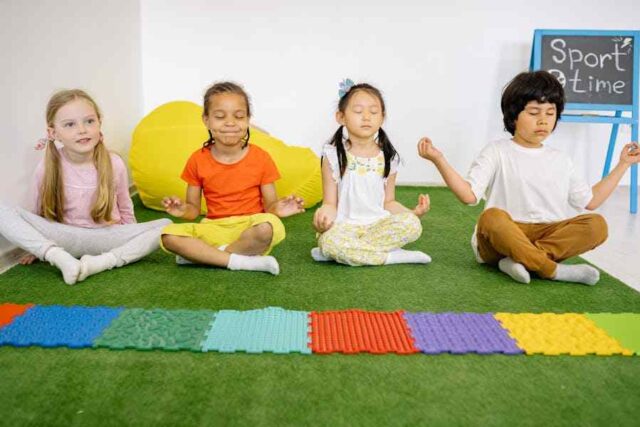Creating a relaxing space for school students during breaks is essential for their well-being and productivity. School can be a stressful environment, and having a designated area where students can unwind and recharge can have a positive impact on their overall experience. Let’s explore various ways to create a relaxing space for students, including design tips, furniture ideas, and activities to promote relaxation.
Understanding The Importance Of A Relaxing Space
Creating a relaxing space for school students during breaks is crucial for their mental health and well-being. It provides them with a safe and comfortable environment where they can relax, unwind, and recharge before returning to their studies. Studies have shown that having access to a relaxing space can improve students’ moods, reduce stress levels, and increase their overall productivity. By providing a designated area for relaxation, schools can create a supportive environment that prioritizes student well-being. This, in turn, can lead to a more positive school experience for students, fostering a sense of belonging and enhancing their overall academic performance.
Designing A Calm And Comfortable Environment
When designing a relaxing space for school students, it is essential to create a calm and comfortable environment. Choose soft, soothing colors for the walls and furniture, such as blues, greens, and neutrals. Avoid using bright, stimulating colors that can be distracting or overwhelming.
Include comfortable seating choices, like bean bags, floor cushions, or comfortable armchairs, to provide students with a relaxing and unwinding area. Furthermore, contemplate incorporating gentle lighting options, such as lamps or string lights, to establish a cozy and welcoming ambiance. These design elements can help students feel more relaxed and at ease during their breaks, allowing them to recharge and refocus for the rest of the day.
Incorporating Natural Elements
Integrating natural elements into the design of the relaxation area can contribute to a tranquil atmosphere. Think about including plants like succulents or ferns to introduce a touch of nature indoors. Natural light also plays a vital role in creating a relaxing environment, so aim to maximize its presence in the space. Position seating near windows or use sheer curtains to allow natural light to illuminate the area. These natural elements can help establish a serene and calming environment for students to unwind during their breaks.
Providing Relaxing Activities
In addition to providing a comfortable environment, it is essential to offer relaxing activities for students to enjoy during their breaks. Consider providing puzzles, coloring books, or board games that can help students unwind and take their minds off their studies. You could also offer guided relaxation exercises or meditation sessions to help students relax and recharge. For outdoor spaces, providing comfortable seating and perhaps even a small garden or green area can create a peaceful retreat. Additionally, consider including a grassy area where students can relax or play outdoor games. Maintaining the grassy area with equipment like Cub Cadet riding mowers can help ensure it remains a relaxing and enjoyable space for students. By providing a variety of relaxing activities, both indoors and outdoors, you can cater to different interests and preferences, ensuring that all students can find something that helps them relax and unwind during their breaks.
Creating A Quiet Zone
A quiet zone within the relaxing space can provide students with a peaceful environment where they can relax and recharge without distractions. Consider designating a specific area of the space as a quiet zone and encourage students to respect the quiet atmosphere by keeping noise to a minimum. Provide comfortable seating options, such as bean bags or floor cushions, in the quiet zone so that students can relax in comfort. Additionally, consider adding soft, ambient music or white noise machines to help mask any outside noise and create a tranquil environment. By creating a quiet zone, you can provide students with a peaceful retreat where they can recharge and refocus during their breaks.
Encouraging Mindfulness Practices
Engaging in mindfulness activities like deep breathing exercises or guided meditation can assist students in relaxing and alleviating stress. Consider incorporating mindfulness practices into the design of the relaxing space by providing resources, such as meditation cushions or guided meditation recordings, that students can use during their breaks. Encourage students to take a few minutes during their breaks to practice mindfulness and focus on their breathing. By incorporating mindfulness practices into the relaxing space, you can help students develop important coping skills that can benefit them both in and out of the classroom.
Promoting Healthy Habits
Creating a relaxing space for school students is not just about providing a comfortable environment; it’s also about promoting healthy habits. Consider offering healthy snacks and drinks, such as fruit and herbal tea, that can help students refuel and stay hydrated during their breaks. Encouraging students to take breaks from screens and technology can also promote relaxation and reduce eye strain. Provide reading materials, such as books or magazines, that students can enjoy during their breaks. Encouraging healthy habits in the relaxing space can help students develop lifelong habits that can benefit their overall health and well-being.
Fostering A Sense Of Community
A relaxing space can also serve as a place where students can connect with one another and foster a sense of community. Consider incorporating collaborative activities, such as group games or art projects, that can help students build relationships and create a sense of belonging. Provide opportunities for students to work together on projects or share their interests and hobbies. By fostering a sense of community in the relaxing space, you can help students feel more connected to their peers and school community, enhancing their overall school experience.
Seeking Feedback And Making Improvements
Finally, it’s essential to seek feedback from students about the relaxing space and make improvements based on their input. Consider conducting surveys or focus groups to gather feedback about what students like and dislike about the space, and use this information to make changes that will enhance their experience. Encourage students to share their ideas for improving the space and incorporate their suggestions into your plans. By seeking feedback and making improvements based on student input, you can ensure that the relaxing space meets the needs and preferences of the students who use it.














